Honor Magicbook 14 Notebook Review: Where Style Paints a Picasso
by Dr. Ian Cutress on May 15, 2020 9:00 AM EST- Posted in
- Laptops
- AMD
- Notebooks
- Zen
- honor
- Picasso
- MagicBook
- Magicbook 14
- Ryzen 5 3500U
Turbo, Power and Latency
Turbo
As part of our usual test suite, we run a set of code designed to measure the time taken for the processor to ramp up in frequency. Recently both AMD and Intel are promoting features new to their processors about how quickly they can go from an active idle state into a turbo state – where previously we were talking about significant fractions of a second, we are now down to milliseconds or individual frames. Managing how quickly the processor fires up to a turbo frequency is also down to the silicon design, with sufficient frequency domains needing to be initialized up without causing any localised voltage or power issues. Part of this is also down to the OEM implantation of how the system responds to requests for high performance.
For our Honor Magicbook and the Ryzen 5 3500U, we get a base frequency around 1200 MHz, and within 2 milliseconds the system shoots up to a fast 2750 MHz. This is not the final turbo, as it requires another 10 milliseconds going through several frequency stages to finally get to a 3.7 GHz turbo frequency. Overall, from idle, we measured just under 13 milliseconds, which coincides with a single frame at 60 Hz. This is usually the target for user-level responsiveness, so the Magicbook gets a pass here.
Power
As part of my new test suite, we have a CPU power wrapper across several benchmarks to see the power response for a variety of different workloads. First workload up is a heavy AVX-related workload.
The CPU power sits around 1 W at idle, and then goes up to a peak of 13 W, before sitting down to 11 W for the rest of the test. So despite the 3500U being a 15 W processor, Honor has configured the CPU here to only hit 13 W at turbo then 11 W in a sustained test. The sustained part of that turbo isn’t that long, only about 10 seconds or so.
Another AVX test is LINPACK, and here we see the same thing – a turbo up to 13 W and the rest of the test goes to 11 W. The difference here is that when the periodic test gets to around 200 seconds, the maximum power limit tails off into a 9.5 W power limit, suggesting that there are multiple sustained workload power limits on this device. If you can complete the work in 10 seconds, you get 13 W – under 200 seconds gets 11 W, and beyond that gets 9.5 W.
Our 3DPMavx test here does 10 seconds on, 10 seconds off, repeating - allowing the system to recoup some of the power budget for turbo. It sort of works, as we can see spikes of 13 W later on in the test.
This final test is more indicative of a real workload. This is our Photoscan test, which has four segments, some of which are multi-threaded, single threaded, or variable threaded. Here we get more of a 9.5 W through the full test, with the variable threaded part seeing a lot of variation (one core can’t take the whole budget it seems). Nearer the end we are seeing more spiky behaviour as some of the turbo budget gets returned.
Latency
Our latency test is a simple core-to-core ping pong test, to detect any irregularities with the core design. As this is an AMD Picasso processor, the four cores of a single CCX should offer the same latency to each other.
The chip has a 26-27 nanosecond bounce latency.
As for the cache structure, again, this is a typical Zen+ APU result:



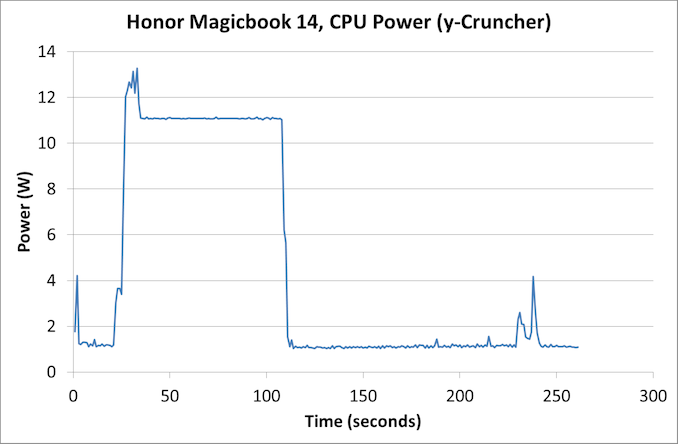
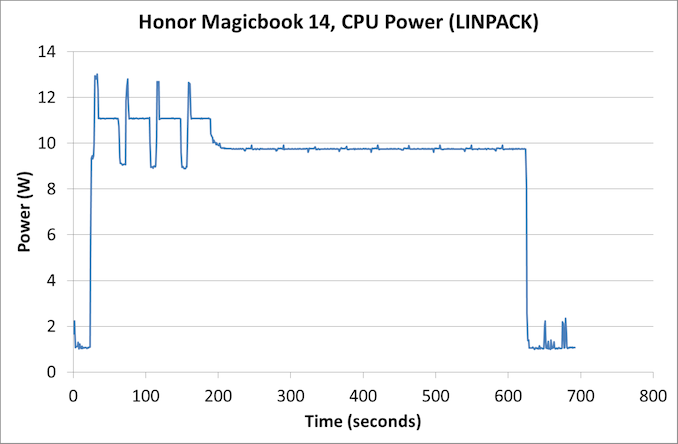
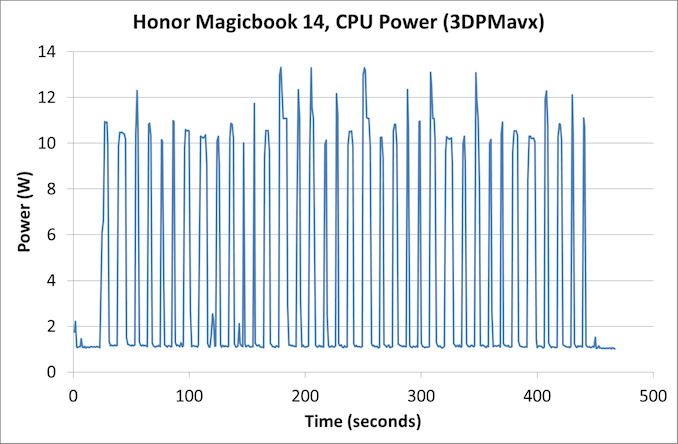
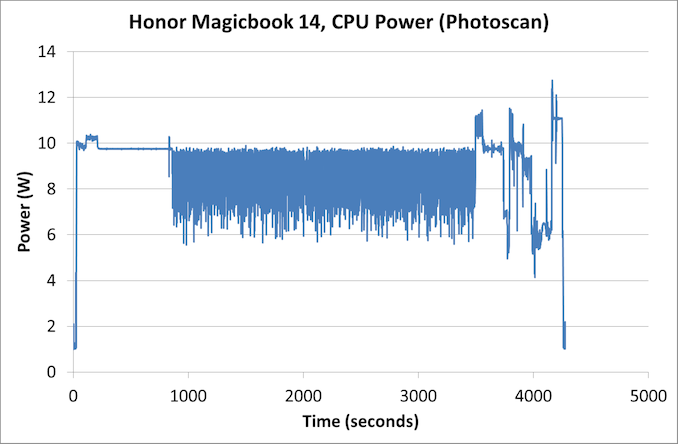

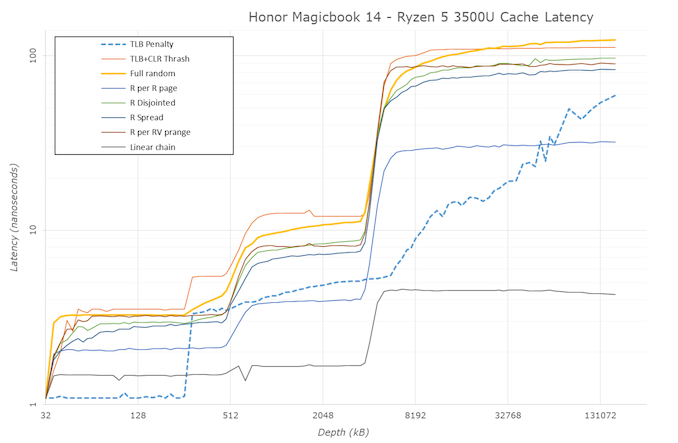








88 Comments
View All Comments
gagegfg - Friday, May 15, 2020 - link
I correct myself: I meant Azus Zephyrus G14North01 - Friday, May 15, 2020 - link
The correct score is 4,394:https://images.anandtech.com/graphs/graph15708/115...
https://www.anandtech.com/show/15708/amds-mobile-r...
Duto - Friday, May 15, 2020 - link
Products like this should not exist, this is a burden copy and paste from a Macbook, even the name, this is outrageous, where are the international copyright laws when it is needed? I always have had Anandtech in high regard, a review like this, giving press time to its audience in the free world to this peace of plagiarism makes me wonder, uhmm it makes me wonder...Retycint - Friday, May 15, 2020 - link
You can't copyright a generic design such as the Macbook design. It is iconic, yes, but not copyright-able. Stop spewing meaningless words such as "international copyright laws" when you have no idea how they work or what stuff can it be applied tosonny73n - Saturday, May 16, 2020 - link
Good products like this should not exist for you. You’re screaming hysterically about some design that might looks like one of your company products. Are you sure this laptop is exactly identical to the macbook? You’re screaming outrageous, wtf? You’re lame. Everyone knows China invented money and you’re using it in your daily live. You should wonder if you need more meds.Lord of the Bored - Monday, May 18, 2020 - link
How much of that money they invented does China pay you to flame everyone that says something mean about them, anyways?sonny73n - Saturday, May 16, 2020 - link
Do you want to know if your god apple ever steal designs from the Chinese? Check Wikipedia or gsmarena for Chinese phones that released months before the iPhones that had the same designs.You are the baddest thief that crys victim.
Lord of the Bored - Saturday, May 16, 2020 - link
No, YOU are the baddest thief that crys victim!LiKenun - Sunday, May 17, 2020 - link
Okay kids, go fight somewhere else.Sailor23M - Sunday, May 17, 2020 - link
Cos they hacked Wikipedia too. lol